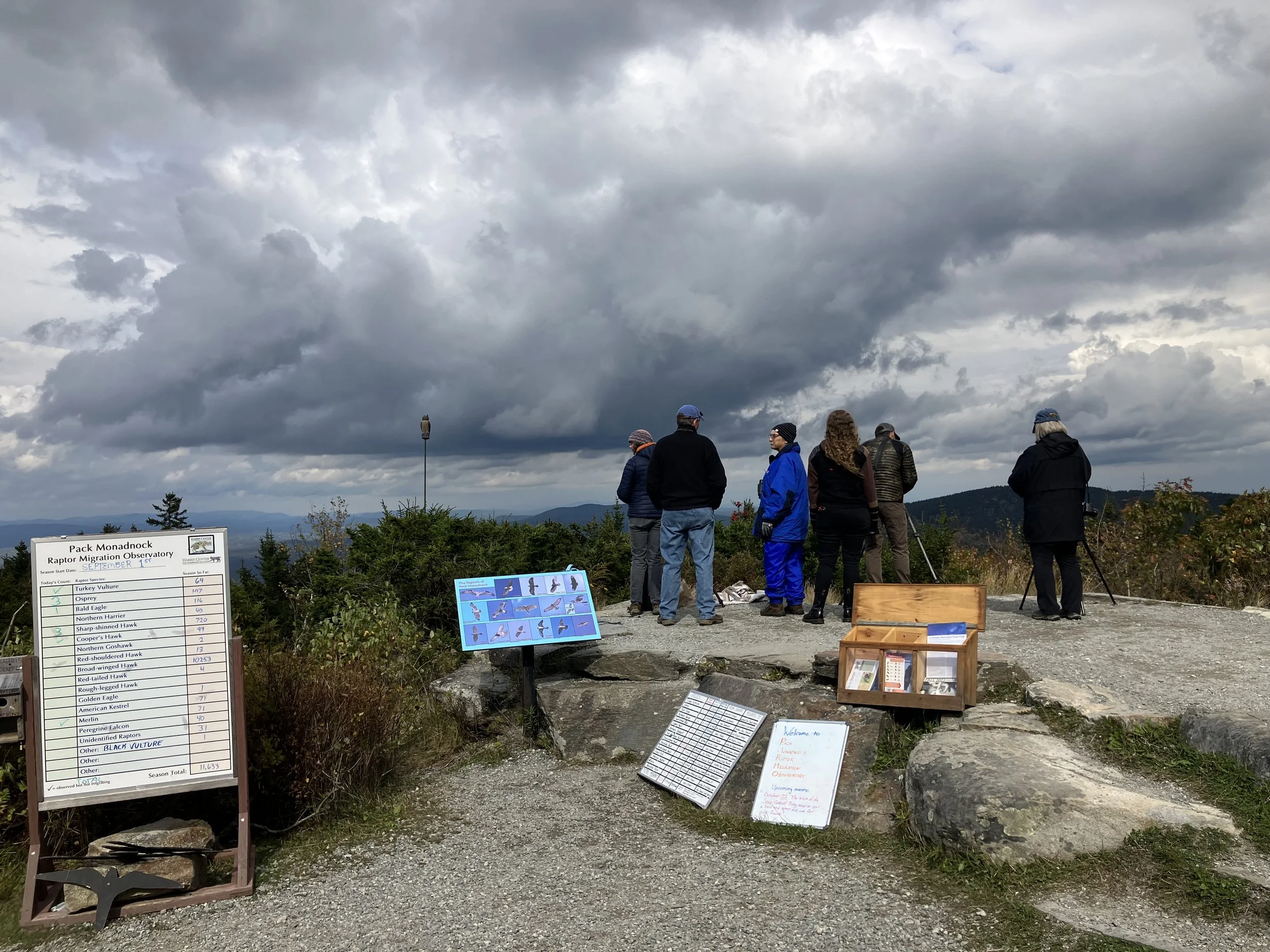The Big Sit – Counting Birds and Improving Your Health
By Phil Brown
I found myself under the weather on a recent fall weekend with crisp colors and ideal hiking weather. This was not part of the plan, as fall offers so many festivals, fairs, and outdoor activities, but I had to listen to my body. ‘SLOW DOWN’ it was saying. The weather was so perfect, though, so I decided to lounge outdoors with binoculars around my neck, and keep my germs to myself. Besides, it was ‘Big Sit’ weekend, so I felt somewhat validated in this choice.
The Big Sit was founded by the New Haven Bird Club in 1992 as a semi-competitive birding event (yes, these do exist, and some are highly competitive – such as the World Series of Birding) conducted from an area within a 17-foot diameter ‘circle’ within a given 24-hour period. The event, held each fall, is free and open to anyone, both individuals and teams. In 2022, there were 119 unique locations which qualified through submitting their bird lists and abiding by these basic parameters. No stranger to Big Sits, I have founded and participated in several over the years from across NH, including the Pack Monadnock Raptor Observatory in Peterborough, which participated, too. Perhaps ironically, though, I had never taken the time to watch birds from my own yard for a full day in the fall, one of the best times to observe a wide diversity of birds in our area, as I rarely sit still long enough at home.
Pack Monadnock Raptor Observatory
But did I really need to give myself permission to avoid the yard work, to-dos, and do a Big Sit at home? I certainly thought so, at least at first. ‘Sitting around’ has a negative connotation, and sitting has even famously been labeled ‘the new smoking’. Like so many things, though, moderation is key. And being confined to a small circle – in this case, my patio – sitting was only one activity I employed to find birds. Sure, I sprawled out in a comfy Adirondack chair watching the sky for migrating hawks for periods of time (these two are particularly compatible), but I at times was highly mobile within this confined area, moving around the edges quickly to identify abundant songbirds moving through in frantic feeding flocks. The Big Sit is essentially a scavenger hunt for different bird species. By day’s end, my tally of 38 species including nine raptors, eight warblers, several sparrows, kinglets, and a Hermit Thrush, all between 9 am and 6 pm.
I took many breaks from the birds, too (a no-no if I were truly competing for the most species), but I gave myself a pass in order to seek the balance I needed to heal – an important takeaway that tempered my competitive side. From within the circle, I had a fire, did some light gardening, and made some phone calls – all with an ear or eye to the sky so as to not miss anything. In the process I discovered there ARE some health benefits to sitting, especially when birds are involved. It may be a necessary antidote to a season dominated by back-to-school routines, a busy work schedule, and seasonal, social activities too good to pass up. Just as sitting has received negative attention, bird watching (or birding) has garnered considerable positive press in recent years, and for good reason. Birds help us focus, improve our memories, connect us to the natural world and each other, and improve mental and physical health. Psychiatrists and physicians are recommending birding to their patients, and I’ve seen firsthand examples of how birding has truly ‘saved’ individuals, from veterans who struggle with PTSD to those with grief, chronic depression, and physical limitations. While birding can be a highly mobile activity, it is also a universal one in that it can be practiced almost anywhere – as birds are all around us!
White crowned Sparrow
Another aspect to more sedentary birding that can’t be matched by other forms is the ability to gather more qualitative information and deepen one’s learning from spending more time with the birds. They either pass by or stick around for awhile while you watch, but when your feet are planted, your observation is heightened. If you’re unsure what species you’re seeing or hearing, fear not. You can hook up with expert birders at places like the Pack Monadnock Raptor Observatory or on Harris Center birding field trips, offered frequently throughout the region. Or, you can stay home and learn on your own, using the Merlin Bird ID sound identification tool – a revolutionary new way of helping people identify birds (ironically, through the use of AI) or more traditional methods.
My advice to you this fall is to slow down by doing a mini ‘Big Sit’ from your own yard or a local park, even if just for one hour, with the intention of truly watching birds. Keep a list of what you see, and jot down some observations of what you don’t know or are curious about. You, too, may soak in all the health benefits this connection with birds provides. For more information on the Big Sit, visit https://www.thebigsit.org/.



